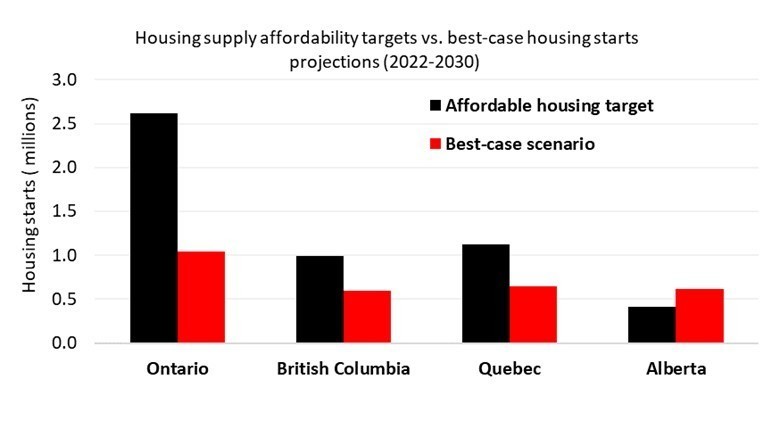CMHC: ‘All hands on deck’ approach needed for housing
A new report by Canada Mortgage and Housing Corporation has bad news for affordable home seekers.

Minister of Municipal Affairs and Housing, Steve Clark, introduced More Homes, More Choice: Ontario’s Housing Supply Action Plan. – Government of Ontario
Key Takeaways:
- B.C., Ontario and Quebec will fall well short of 2030 affordable housing goals due to lack of skilled labour.
- Labour capacity issues are most critical in Ontario, which has the largest population and the highest price pressures.
- These provinces would need to double their best-case labour capacity in order to adequately reach housing affordability supply targets.
The Whole Story:
Even under best-case scenarios, major Canadian housing markets will severely miss affordable housing targets due lack of skilled labour.
According to a report by Canada Mortgage and Housing Corporation (CMHC), housing starts will fall well below the 2030 affordable supply targets in Ontario, B.C. and Quebec, while Alberta will be able to achieve its affordable housing supply target by 2030.
“This report further reinforces that to solve the issue of housing affordability in Canada, we need an ‘all-hands-on-deck’ approach to increasing the supply of housing to meet demand,” reads the report. “This will include building on innovative ideas and initiatives being utilized in the current housing industry and through the federal government’s National Housing Strategy.”
In June CMHC released “Canada’s Housing Supply Shortages: Estimating what is needed to solve Canada’s housing affordability crisis by 2030”, which took initial steps to estimate how much additional housing supply is required to restore housing affordability by 2030.
Using the housing supply targets outlined in ESG 2030, CMHC released the follow-up report “Labour Capacity Constraints and Supply Across Large Provinces in Canada”, which examines the skilled labour capacity in Ontario, Quebec, B.C. and Alberta, to deliver on this level of needed housing supply.

The report looks at a best-case scenario, which projects housing starts with maximum labour capacity and compares these projections to the affordability supply targets set out in its housing shortage report and CMHC baseline starts forecasts. The best-case scenario is based on the highest percentage of people in our population who work in residential construction and the lowest number of residential construction workers per housing unit under construction in the past 25 years.
To address the issue, the report offered a series of recommendations. These included creating and rolling out programs, such as the Housing Accelerator Fund and the Rapid Housing Initiative, amongst others, as part of the National Housing Strategy, that aim to identify and address innovative solutions to accelerate the construction of housing supply in many urban centres in Canada.
The authors also suggested a shift in focus towards converting existing structures into residential units – particularly existing commercial structures.
They added that Canada could increase the construction of multi-unit housing, as it provides less logistical constraints of moving labour materials and equipment among structures than single-detached homes.
They also called for more incentives to develop a new generation of skilled construction workers and more targeted immigration programs to encourage skilled, temporary and/or permanent foreign workers to bridge the labour shortage, particularly in Ontario and B.C.
